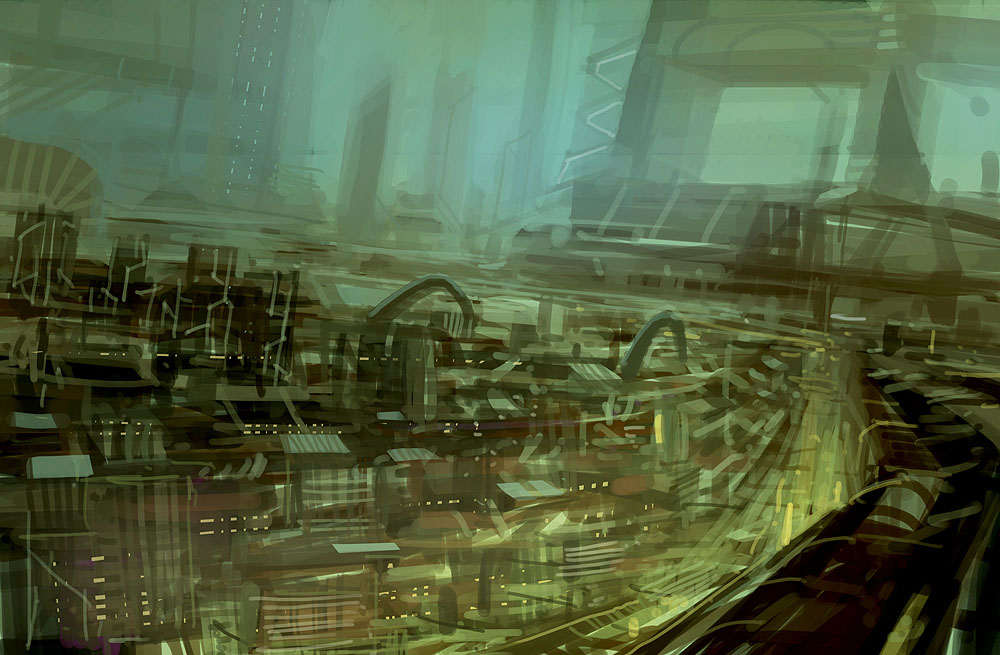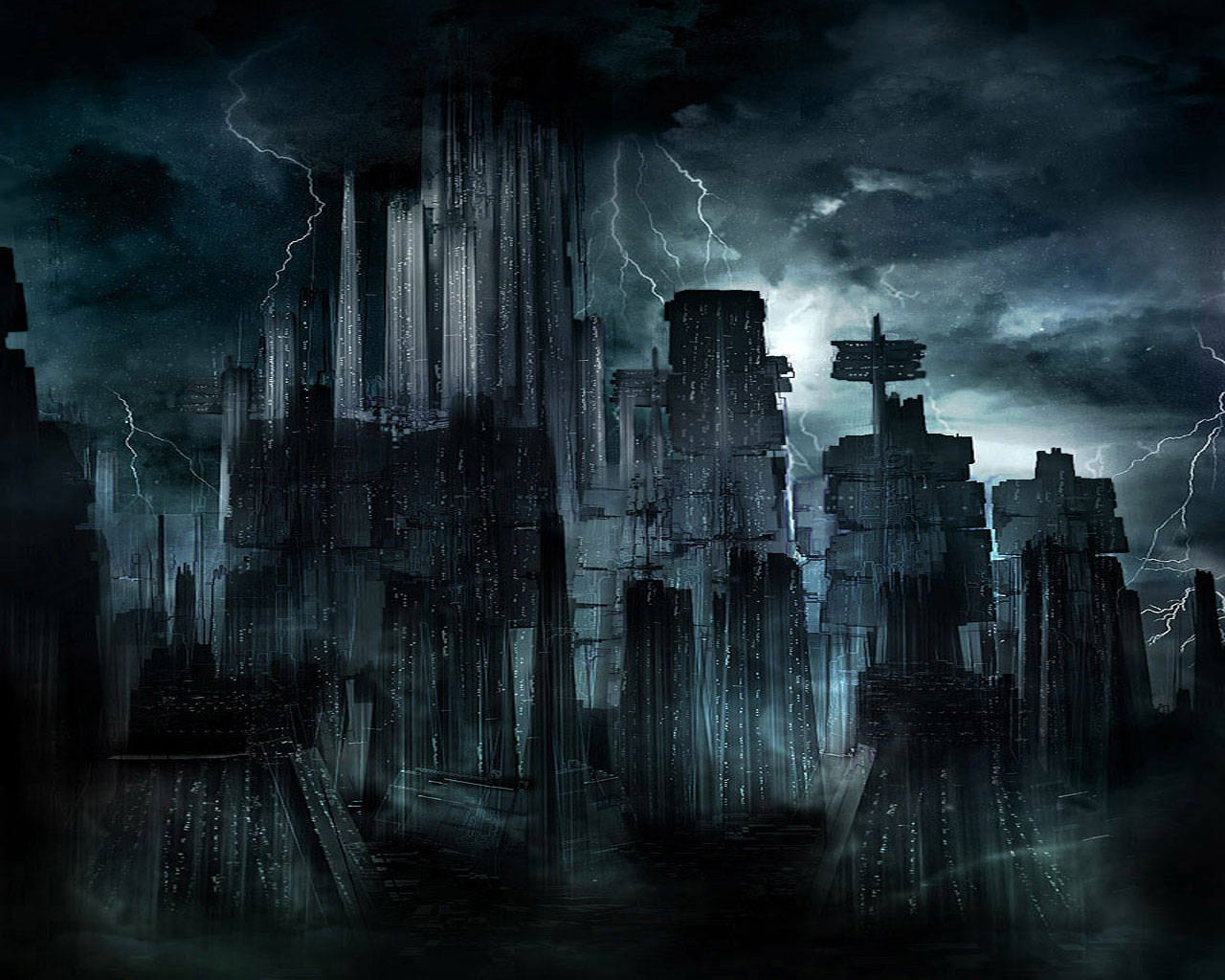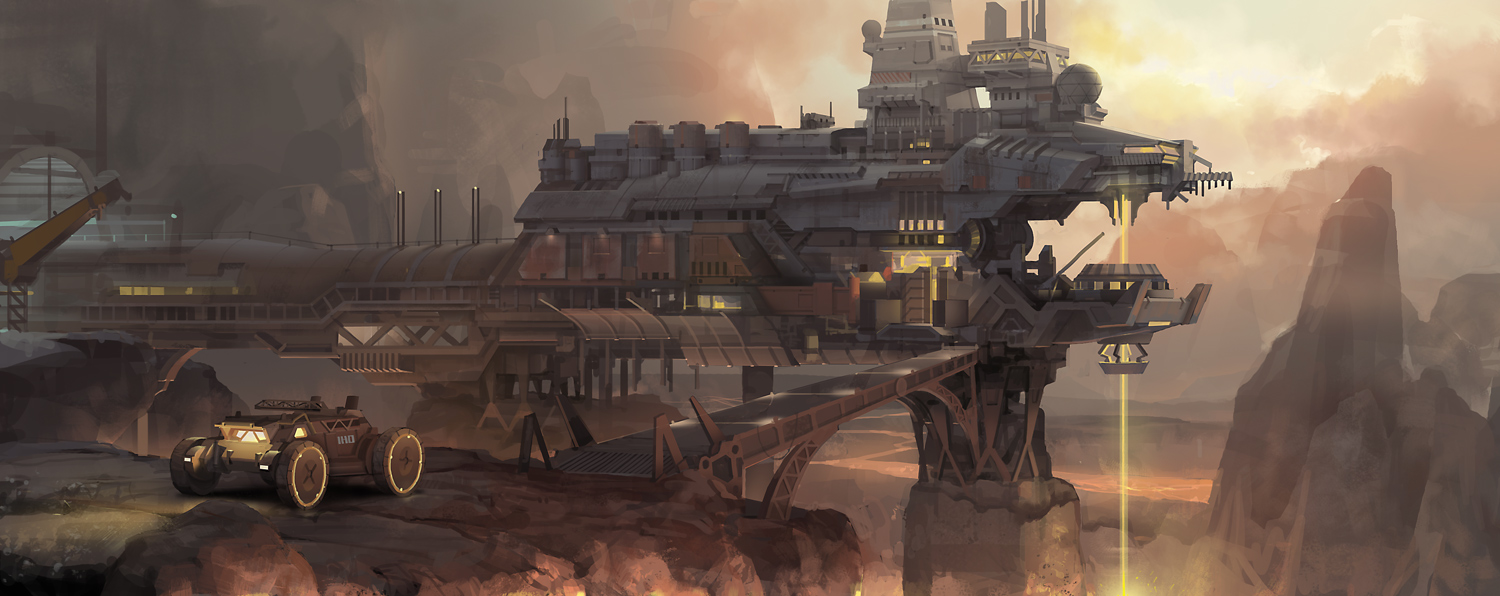Ilsa Voll
Kampfpanzer Kommandant

Name: Eisenwelt
Region: Outer Rim (between Fondor and Fenessa)
System: Grau Welten System
Suns: One Sun (G-Type Main Sequence)
Orbital Position: Outer Habitable (This renders the planet livable, but colder on average)
Moons: 1 Moon called InPaM (Industriepark - Mond [Industrial Park - Moon])
System Features: The system is surrounded by heavy asteroid fields and dust clouds. There are only four safe routes into and out of the system.
Coordinates: Not 100% sure, but it lies between Fondor and Fenessa in the empty space between Fringe and OP space due south of Yn.
Rotational Period: 36 Standard Hours
Orbital Period: 310
Class: Terrestrial
Diameter: 10,514km
Atmosphere: Type I (over oceans and in the upper atmosphere), Type II (everywhere else).
Climate: Slightly colder than Earth with far more pollutants and chemicals in the air.
Gravity: 0.14% heavier than Earth
Primary Terrain: Industrial production centers dotted with polluted seas and toxic wastelands.
Native Species: None known.
Immigrated Species: Humans, Ugnoughts, Twi'leks, and other species.
Primary Languages: Sprache is the primary language (German). Basic is the known trade language, but the vast majority of the planet revolves around Sprache for everything aside from Trade.
Government: Corporatocracy (Representative Democracy controlled by the planetary corporations)
Population: Approximately 30 Billion
Demonym: Eisenwelten
Major Imports: Foodstuffs, water, advanced technology
Major Exports: Raw goods, manufactured goods, civilian vehicles/ships, commercial vehicles/ships, military vehicles/ships, and other industrial products.
Affiliation: None specifically at this time, though many Eisenweltens have emigrated elsewhere to other factions.
Major Locations:
- Industrie-Mitte - A: The main powerhouse of industry on the planet. Most manufactured products are made here.
- Raffinerie Anlage Süd - One of the planet's main refinery sections, located approximately one hundred miles to the south of Industrie-Mitte - A.
- Stahl Gebirgskamm - A series of mines stretching approximately 600 miles along one of the major mountain ridges on the planet. Located approximately 1,500 miles to the east of Industrie-Mitte - A.
- Tod Nebel Steppen - A long stretch of sparsely occupied toxic wasteland located directly west of Stahl Gebirgskamm.
- Geshwärzt Meer - A polluted sea on the North Western hemisphere of the planet, known for it's black waters and caustic effects on anything within it.
Culture: Eisenwelt is mostly known for it's massive factories, huge amounts of production, and it's unique solar system. These things combined create a highly unique planet and culture within the galaxy set apart from most known worlds at this time.
Primarily, the world revolves around the working class, which makes up the vast majority of the planet's population. Named Mittelschicht in Eisenwelten, approximately 50 to 60% of the planetary population is employed at various levels of the middle class. This worker class operates in various fields ranging from laborers in the factories to more skilled workers in legal, management, industrial, and even military fields. Below them in the more menial tasks such as industrial waste disposal or massed, unskilled labor are the Unterklasse, or lower class. At the top of the society are the Oberklasse, or upper class, made up of corporation owners, the wealthy, and the higher government officials. Transitioning between the lower and middle classes is common and welcomed in society as it is a frequent occurance in the culture. Transitioning between the middle and upper classes is less common and, while not unwelcome, most "new" upper class families tend to be looked down upon for the first few generations before full acceptance. Transition from the upper to lower class is highly uncommon, even rare, but such instances are documented in the cases of political fallout, criminal prosecution, bankruptcy, worker revolts, etc.
The planetary government is designed as a Representative Democracy which is, in theory, controlled by the population. However, due to the cultural mix after the massive war that engulfed much of the planet, historically referred to as Kampf der Eisenwelt, the planet's corporations quickly took control. Various large companies bought out politicians and discretely purchased district votes, all the while catering to the people and the working class as much as was possible. This, mixed with a strong sense of nationalism among the various working districts and cities on Eisenwelt, brought about a sense of unity that had not been felt or known since before the Kampf der Eisenwelt. The politicians in control of the government are hand picked by the companies and, in turn, play to the interests of the working party whose interests are carefully cultivated by those same corporations, resulting in greater industry and unity at the cost of personal freedom.
Influence from the outside galaxy is present, though muted. Corporations and the government carefully restrict most of the holonet broadcasts into the system, something that is easy and simple to do as the high metal content in the asteroids and dust clouds surrounding the planet cause signal interference, creating the need for relay stations at the system's four entrances where such broadcasts can be monitored and filtered before rebroadcast into the system. Immigration into the system is controlled to an extent. While no discrimination policies exist, certain non-human, human, and near human groups are often denied entrance based on cultural backgrounds of rebellion, resistance to authority, or known uprisings. Twi'leks are the favored non-human most often admitted as immigrants, mainly due to the Eisenwelten government's outlook that a known species that is historically known to be frequently enslaved is less likely to resist after many, many generations of "conditioning" by the Hutts. Unsurprisingly, there are few instances of races such as Wookiees and Hutts in the system, as those species are known primarily for rebellions when pushed to a breaking point in the case of Wookiees and, in the case of Hutts, tendencies to found criminal organizations that would compete directly with the corporations found on the planet.
Eisenwelt has strong, deep roots in military service which has created a type of subclass to society within the Eisenwelt culture. The military does not restrict enlistment based on class and, as a result, while the armed forces are dominated by the middle class, the lower class holds a far larger percentage in military compared to any non-military field on the planet. The Eisenweltens revere their soldiers and black-sea sailors to a fervent level not seen in most cultures. The vast majority of politicians are known veterans of the military and the planet routinely conscripts from the population for a mandatory year of four year term of military service (this can be avoided by objection to violence, religion, physical disability, or commitment to higher education, though in the case of Objection to Violence reasoning, this can often be seen as a stigma against the individual). Most production on the planet is of military orientation, both for domestic and foreign use, and even in non-military industries, the government regulates that all corporations and factories must be able to switch from civilian to military production specifications within twenty four hours after a twelve hour notice. This regulation has lead to most Eisenwelten industries and factories to construct their facilities in modular methods so as to achieve this drastic change as quickly as possible.
The system is also very heavily populated, despite it's location. As the Grau Welten system massively industrialized, corporations attempted to maximize labor output. Initially, they relied on droids which sufficed for the most part. However, droids often lacked the intuition and complex skills an organic laborer possessed, leading to the corporations requiring more and more non-droid labor. Instead of pulling in as many immigrants or foreign laborers as possible, the government, backed by the corporations, took the long view approach. Propaganda was issued, laws were made, regulations were set in place, and politicians pushed the necessary agendas. The result was a unique cultural change evident in Eisenwelten home life: Large families. Eisenweltens are encouraged to have large families with many children. The strong economy and plethora of jobs throughout the system, not just on the planet itself, prevented the problems of massive overpopulation. However, it did cause the problems of food and water shortages. The answer was as simple and long viewed as the worker shortage problems: space stations. Massive space stations dot the system in its entirety. Each station is, essentially, arable land used to grow a constant supply of crops and many are also massive water recycling plants designed to turn non-potable water into usable water to be shipped throughout the system. Also, by government ruling, any military or civilian station larger than one hundred meters is required, by law, to be self sufficient. All stations of listed size or larger are required to possess functioning water recycling sections as well as hydroponics bays. These edicts and laws won't keep the system well fed, but in the event of emergencies such as the Gulag plague, can be used to give a minimum baseline to keep the majority of the population alive via rationing for extended periods of time. All other food and water is mostly imported from outside the system and distributed accordingly.
Technology: Equivalent to the Galactic Standard in the majority of areas. Lower class areas are of sub-par standards while upper class areas are above average in tech levels.
History:
Eisenwelt has no official or unofficial records of founding. In fact, despite the myths and legends, no one at all knows just who found the planet or when it was settled. What is known, however, is that the planet was settled for the purpose of extracting the rich metals and minerals from Eisenwelt's crust and the asteroid fields in the system. Metal ore and mineral extraction began within the first decades of settlement and, within the first few centuries, the planet's population and industrial base expanded exponentially. Because of this, Eisenwelt is renowned as a massive industrial center and production powerhouse.
Due to the high levels of industry and industrial waste and byproducts, the planet was quickly rendered highly polluted within the first thousand years after settlement. As a result, the planet is well known for its pollution levels that have caused large swaths of land area to become toxic wasteland and every natural water source on the planet to become rendered non-potable, poisoned, and often highly caustic to anything placed in or on the water. Air pollution is often so thick on most of the planet that anyone moving outside of the sealed cities and industry parks requires a rebreather to prevent sickness or even death from the noxious fumes. Some locations are free from those levels of pollution, however. Namely the oceans, which have evolved a type of caustic and pollution resistant algae capable of filtering much of the air pollution out of the air over the water, and the higher, mountainous regions that rise up above the smog clouds, the most famous of these being the Stahl Gebirgskamm, a long mountain chain well known for its vast metal ore deposits.
The planet is protected by the Eisenwelt Militär, the system's military forces. The Militär is made up of Boden-Armee and the Sterne-Marine, the Army and Navy respectively. Both organizations were founded in 612ABY after the Kampf der Eisenwelt, a series of wars lasting decades and generations triggered by the Gulag plague. The Sterne-Marine is currently comprised of system defense ships organized into Sterne-Flotte, or Star Fleets, that guard the four entrances of the system and patrol the interior of the Grau Welden system. The ships are geared more towards close quarters fighting than speed as, for the past few centuries, there was no known escape outside of the system, allowing the fleets to deal with anyone unintelligent enough to start a fight within the system. The Boden-Armee is made up of all ground troops and shipboard marine units, called Marinesoldaten, each organized into Korps and Bataillone. The most famous of these units are the Kampfpanzer Korps, the armored tank corps of the Boden-Armee. The Kampfpanzer units are the most elite and dedicated fighting groups on the planet, easily outclassing equivalent units on other planets within foreign factions in both training, tactics, and machines. To be assigned to a tank crew is considered a great honor and, in fact, most famous politicians and corporation CEOs are former Kampfpanzer officers and soldiers. The most famous tank unit in the Boden-Armee is the Geister Korps, or Ghost Corps in Basic. Officially designated the 9th Tod Nebel Steppen Kampfpanzer Korps, or 9th Kampfpanzer, the unit is well known for lightning fast attacks, brutal efficiency, and for adopting tactics specifically designed to disrupt and sever enemy communications, supply lines, and rear echelon support.
The Gulag plague affected Eisenwelt similarly to the rest of the galaxy. When the plague was first detected, all traffic into and out of the system was stopped immediately and enforced by the old Eisenwelten navy who had orders to use lethal methods where needed. After a few liberal applications of such policies, the planet was cut off from the rest of the galaxy, preventing recurring infections of the system. However, the Gulag plague was already doing damage. Millions died from the sickness, leaving whole districts depopulated or abandoned. Entire space stations went dark or were sealed, the infected victims left inside to die. In one case, a naval ship was infected and the virus began quickly spreading through the crew. The Generaladmiral of the fleet the ship was from ordered the ship fired upon and destroyed, condemning the crew to death to prevent subsequent infection of the rest of the fleet.
Decades after the initial infection, food and water were scarce which lead to an all out planetary brawl for resources. Around 559ABY, a local warlord, a human named Axel Abeln, began drawing other warlords to his banner and built a power base. Slowly, over the next two decades, he united various sections of the planet into one nation. To do this, he used a revolutionary tactic that took advantage of the planet's large expanses of open, polluted terrain: rapid, armored warfare. He called the tactic "Blitzkrieg" and he quickly managed to defeat his foes by quickly smashing their lines with his own Kampfpanzers and enveloping critical locations. Once half the planet was under his power, the rest of the world fell to him in quick order. At this point, he established a representative democracy and was unanimously elected into power. At this point, he ordered a new fleet to be built and sent throughout the system. Rediscovering space stations, mining facilities, and wiping out the last dregs of the pirates and scum that lurked in the system, occasionally raiding the planet for supplies and resources.
Eisenwelt then prospered for centuries until it was reunited with the galaxy as the Gulag plague finally died out. The system immediately set in place immigration restrictions, production standards equivalent to the rest of the galaxy, imported technology and needed resources, and began exporting everything they could spare to bring in the most amount of profit while maintaining comfortable living for the system's population.
For the moment, Eisenwelt is unaffiliated, but as the nearby major factions look outwards from their borders, this may change in the near future...
Notable PCs: Ilsa Voll
Intent: To create a unique and flavorful homeworld for Ilsa Voll and those who wish to create Eisenwelten characters in the future. Also, to create a new and unique industrial world that is available for use on the galactic scale, perhaps even becoming a major focal point in interfaction relations.









